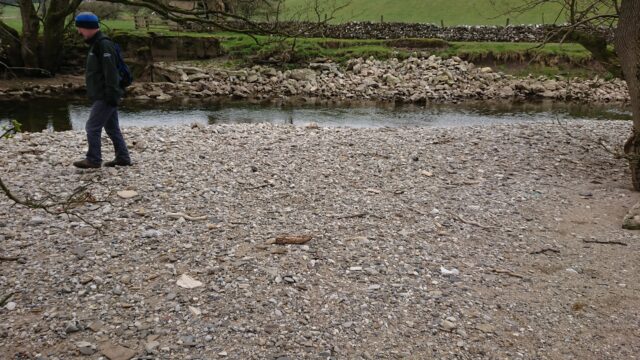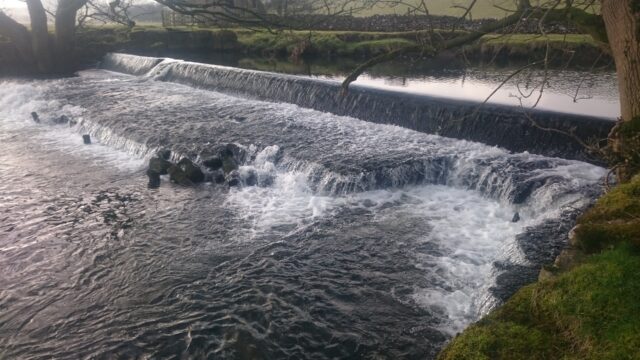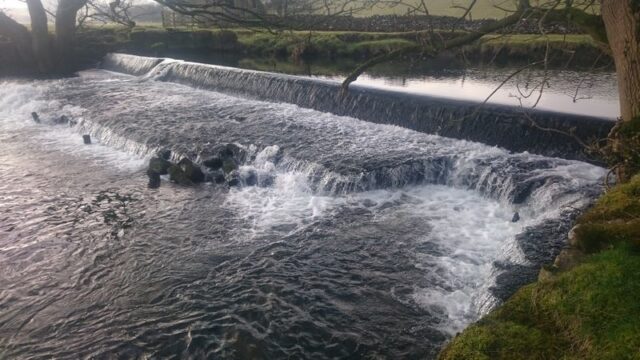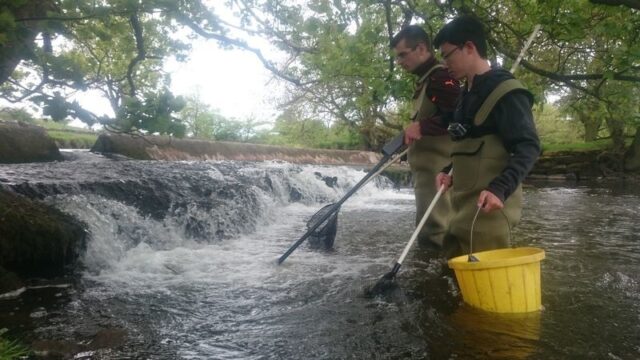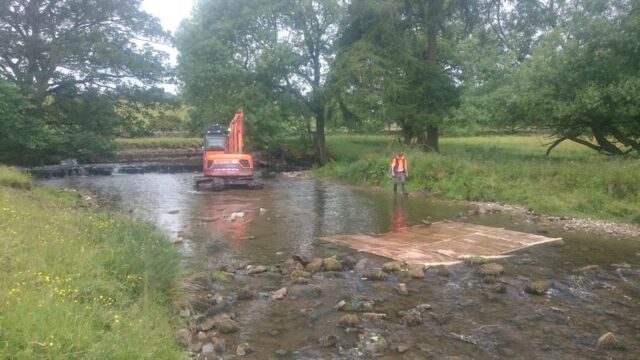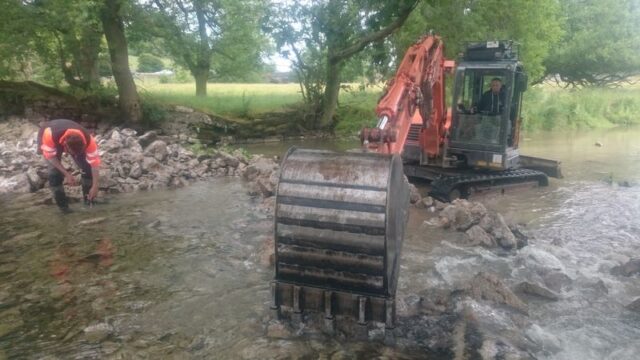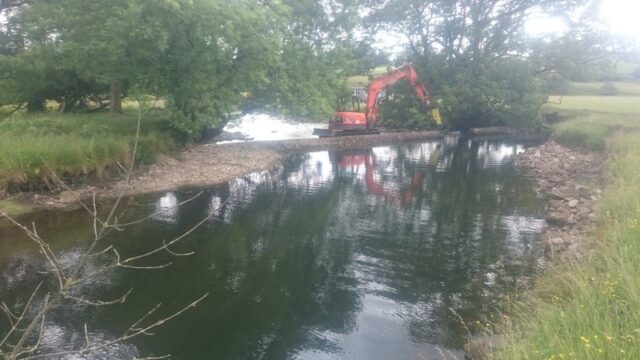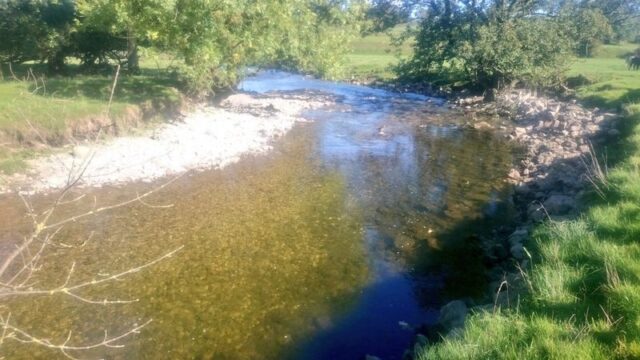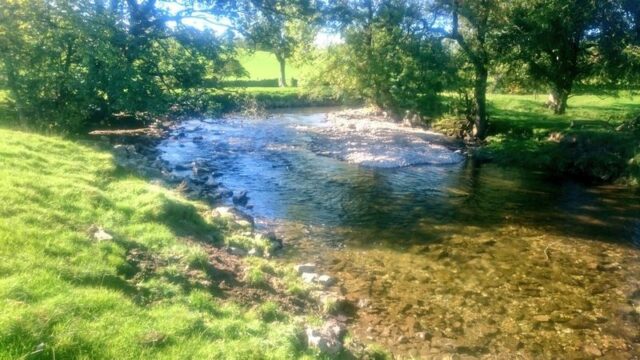Summary:
Project name: Coniston Cold Weir Removal
Location and channel length improved: The River Aire at Coniston Cold, North Yorkshire. 20.4km of unrestricted access from the Aire and into Otterburn Beck.
Issue: A former mill weir which was in situ for ~180 years, yet redundant for at least 60. The 19m wide, 1.4m high (plus a 4m sloping stone apron on the downstream side) was a major barrier to fish and sediment movement and had impounded the river, thereby drowning out quality habitat, for ~100m.
Objective: Full removal to reinstate connectivity.
Method: Removal of notch boards to lower upstream water-level, breaking out of apron to create a stable working platform for 8‑tonne plant, and then gradual reduction in crest height. All metal and timbers were removed, and concrete broken into manageable chunks and used to infill weir pool. Top-dressed with stone from the apron and channel left as a uniform cross-section to regrade and redistribute sediment from upstream naturally.
Budget: £7,956 (full economic cost)
WTT role: Jonny Grey, lead partner — project design and delivery.
Partners: The Phillip Green Trust (owner) and tenant farmer, Environment Agency, and Aire Rivers Trust. Also supported by the Patagonia World Trout Fund.
Project date and duration: Summer 2018, 2 days + associated pre and post (ongoing) monitoring.
